Legend
Extremes
In theory, extremes are rarities. At any given moment, there can only be one of each superlative—smallest, tallest, fastest, farthest, deepest, darkest, brightest—but, as the saying goes, records are made to be broken. The indivisible atom was split. Infinity has been proven to come in many sizes and shapes. Guinness prints new almanacs each year and people keep buying them. An extreme can seem like a singularity up on its podium, but it’s always part of a continuum, a narrative of revision, the boundary continually expanding, leaving has-beens and once-truths in its place.
If anything, extremes are archives of finitude, but people love to forget this so they can celebrate these fleeting moments of attainment. To do otherwise would admit to a commonality that runs counter to the anthropocentric agenda. Instead of seeing ourselves as one of many, another animal, one with nature, we conceive ourselves as an extreme—outside, beyond, or better than the ecologies and other, more codependent systems we have somehow transcended. It’s a stunning delusion, one that surely couldn’t sustain itself, which is perhaps why we obsessively catalogue and valorize our feats of exceptionalism and project this measurability back onto the world. Even if humans will never be the animal that is largest or smallest, fastest or slowest, we are the one privileged to make such distinctions, proof that we, sapiens, are the closest to the divine exterior that our extremes seem to be grasping for.
It’s not surprising then that the pursuit of extremes is a Sisyphean one, cruel and comic and noble and sad all at once. How many expeditions have been lost to Everest, the Outback, the Amazon? All so the one that succeeds can be supplanted by one quicker, longer, riskier. Again and Again. This futility should dissuade us from trying at all and the sheer repetition of the endeavor should make it uninteresting, but there is something seductive about the unattainable, something transfixing about the dumb dedication we keep bringing to our impossible task. The punchdrunk boxer who keeps standing up for no good reason, even as his corner begs him to stay down.
Much has been written about indominatability of the human spirit, but also of our death drive, and extremes make space for both. They are reminders that it’s not just possible but natural to feel shame and pride at the same time, a kind of schadenfreude for ourselves. Home run records asterisked with perjurious roid rage are impressive nonetheless. There are high suicide rates among Lotto winners but who’d honestly turn down a winning ticket? The buzzer-beater and the gruesome compound fracture merit the same slow-motion replay, allowing us to marvel at the spectacle of humanity pushed to and then beyond its limits. Jaws drop when we learn how much life flourishes in even the most inhospitable conditions, but no one is surprised when it turns out this life comes at some cost—blindness in cave-dwellers, the toxic stomachs of scavengers. It’s lonely at the top. But doctor, I am Pagliacci.
So while extremes often paint a black and white picture of the world, the failures of this absolutism are often unwitting tributes to the gray space extremes work so hard to exclude. Beneath the declarative syntax of the extreme is an interrogation—equivocal, compromised, and in a state of constant flux—traits that guide this issue of Territory.
-Nick Greer & Thomas Mira y Lopez
Maps
We ask our contributors to construct or respond to a map, but what defines a map and how a contributor chooses to interpret its territory will vary radically with each piece. Here is how things played out for each:
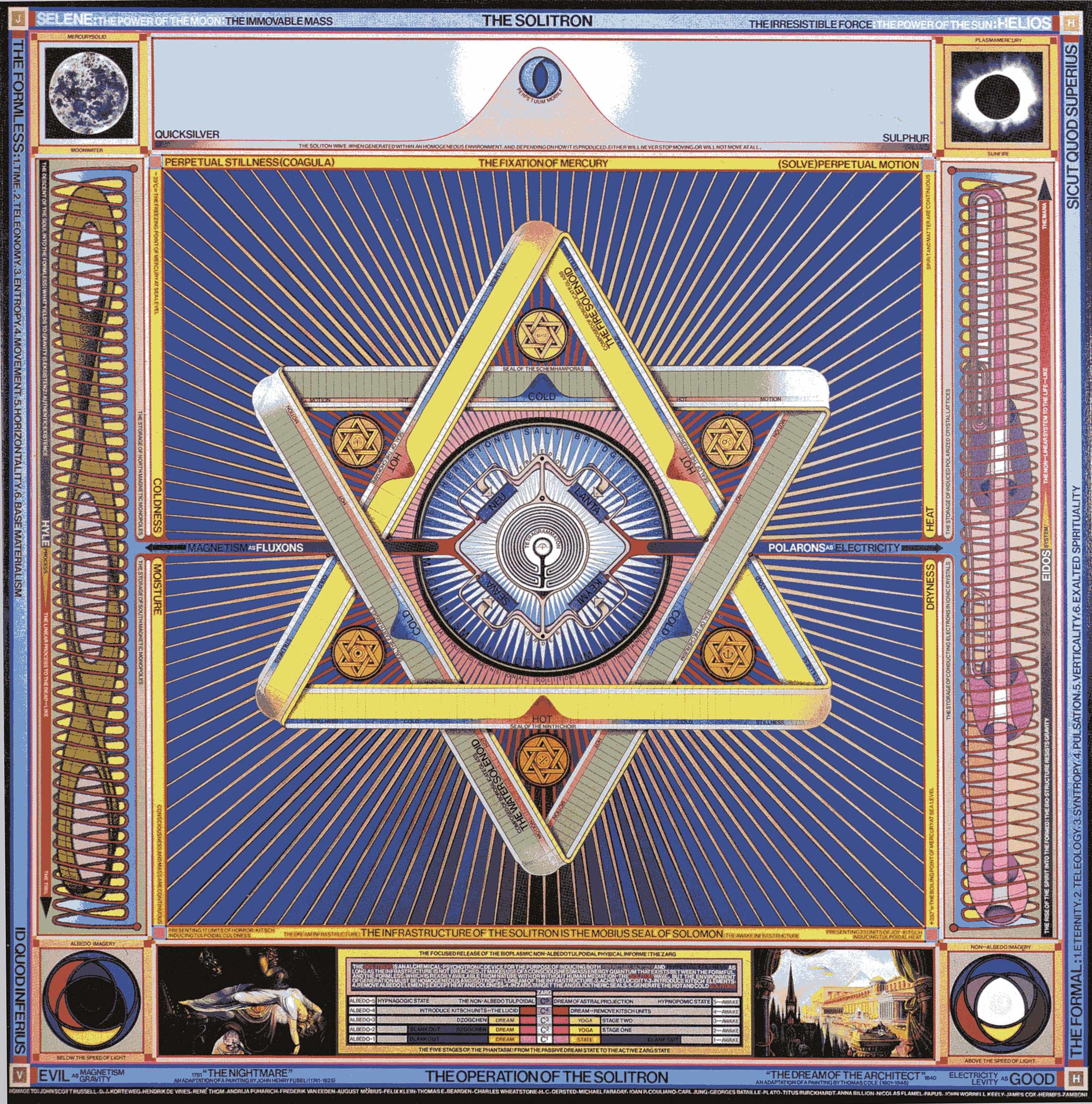 Rosebud Ben Oni’s “Poet Wrestling With When She’s Gone” was first conjured during the editorial process for the Journeys issues. But what started as a journey turned into something deeper, something in the middle of zero, beside, nullification, and within dark energy. As for a map, in her words:
Rosebud Ben Oni’s “Poet Wrestling With When She’s Gone” was first conjured during the editorial process for the Journeys issues. But what started as a journey turned into something deeper, something in the middle of zero, beside, nullification, and within dark energy. As for a map, in her words:
“I drew the map of Efes. I took one Polaroid of it, and sent it to a friend in a letter. That letter then was lost in the mail. The original, I accidentally threw away while my husband and I were cleaning. It’s very odd. It might be chance, but I think because the idea has only started to take root, whatever is out there doesn’t want me to draw it yet. But I ‘see’ it very clearly. It moves through my days like a song and keeps me up at night.”
And so the map we’ve paired with “Poet Wrestling with When She’s Gone” is Paul Laffoley’s “The Solitron” a plotting of science and mysticism. The result is far more lyrical than you might expect. At the heart of scientific inquiry is the scientist themself—the seat of the inquiry, of consciousness. Here, the poet herself. And in the heart of this poem is the question of existence and consciousness—where they end, or begin, or neither.
∞
 Erich Brumback’s “On Extremophiles” is paired with a map of the mouth of Vulcano, taken from an 1892 book of geological maps of Italy. As Brumback’s essay notes, it was here in Vulcano that scientists discovered an extremophile in a geothermal vent: “a microbe resembling a kumquat,” which they named “rushing fireball.” The southernmost of the Aeolian Islands, Vulcano is known for its hellish qualities, another sort of extreme: the air smells like sulfur, the volcano is still active. Stromboli, the northernmost of the Aeolian Islands, is famous for being the title of a 1950 Roberto Rossellini-Ingrid Bergman film, the subtitle of which is ‘Land of God.’ Forty miles: the difference between God and the devil.
Erich Brumback’s “On Extremophiles” is paired with a map of the mouth of Vulcano, taken from an 1892 book of geological maps of Italy. As Brumback’s essay notes, it was here in Vulcano that scientists discovered an extremophile in a geothermal vent: “a microbe resembling a kumquat,” which they named “rushing fireball.” The southernmost of the Aeolian Islands, Vulcano is known for its hellish qualities, another sort of extreme: the air smells like sulfur, the volcano is still active. Stromboli, the northernmost of the Aeolian Islands, is famous for being the title of a 1950 Roberto Rossellini-Ingrid Bergman film, the subtitle of which is ‘Land of God.’ Forty miles: the difference between God and the devil.
∞
Apolo Cacho’s “View from Mexico City: Past, Present, and Future” is what its title suggests down to its syntax. Reading chronologically from left to right, the city’s architecture moves from older, sturdier romanesque arches and mesoamerican pyramids to more modern concrete structures and glass facades that are decreasingly stable. This disintegration continues and by the far right the city has become indistinguishable from the ruins atop which it was built. In maximal black and white, the city is bleak and apocalyptic, or, in Cacho’s words, it is “la ciudad más horrible del mundo.”
∞
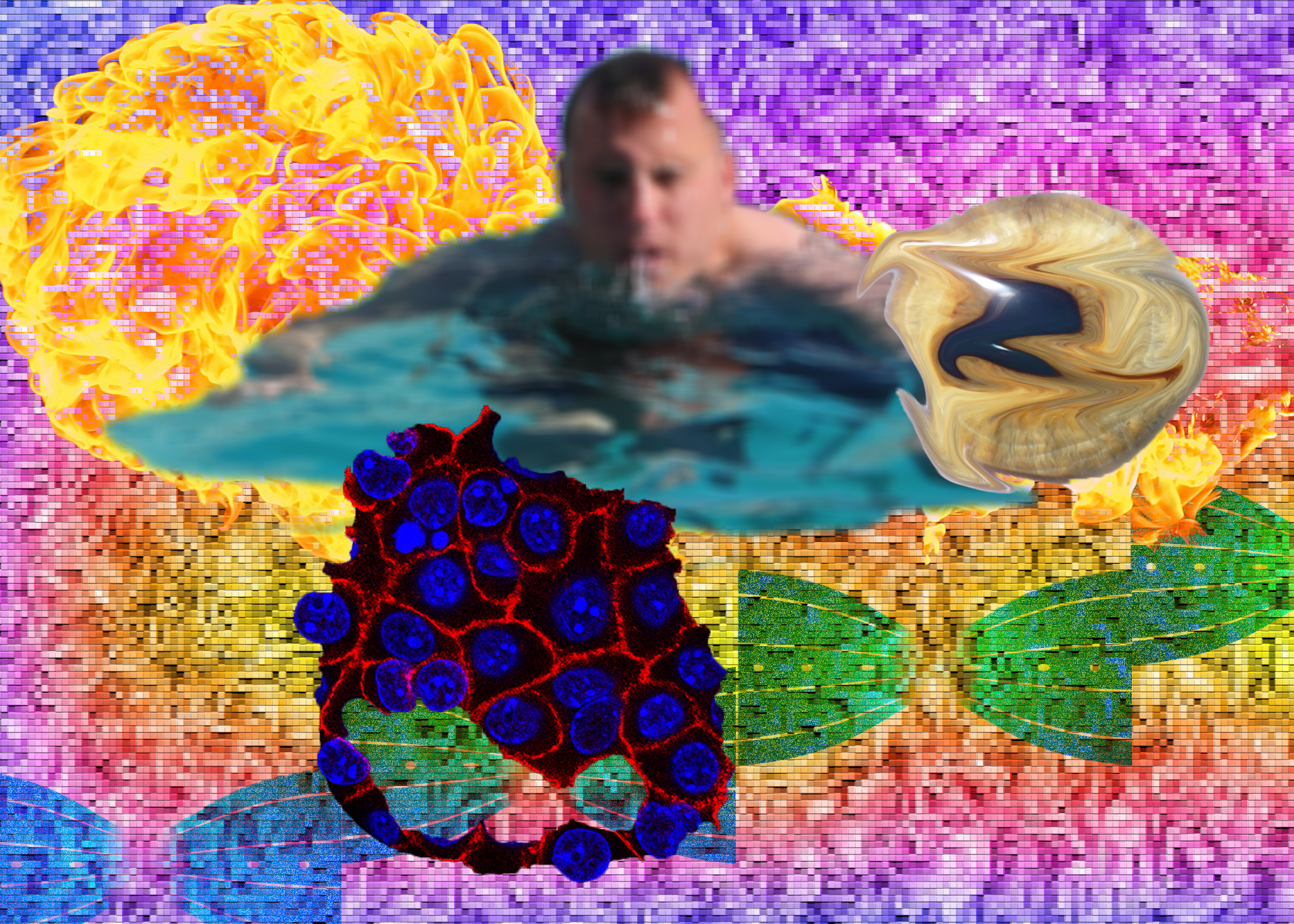 Ariel Chu & Rainie Oet’s “Transmissions from Another Body” is an experiment in merging two organisms in both product and process. On the latter, Ariel & Rainie had this to say:
Ariel Chu & Rainie Oet’s “Transmissions from Another Body” is an experiment in merging two organisms in both product and process. On the latter, Ariel & Rainie had this to say:
“We had a lot of fun with this project, paying close attention to the process itself. Before we even began writing, we played all sorts of mapping games centered around the theme "Extremes." Specifically, we used free-association to write words and phrases on index cards, matching them in rapid succession on a table that quickly ran out of room, so that we had to layer cards over other cards, in a way that caused only half of certain cards to be seen. From there, we picked our favorite phrases and agreed on a concept that would tie them all together (the idea of alien perceptions, and how human sensory faculties are necessarily limited). Then, we repeated the exercise in a more minimalistic way, imagining different kinds of senses an alien being might have. We settled on our top senses, which mutated into the filters for our visual image. The process of the art itself involved digital collaging based on gut instinct. Rainie would find some images and play around with them on Photoshop, while Ariel worked on text. Then we’d switch places, and again, until our individual contributions mutated into something structured and cohesive.”
∞
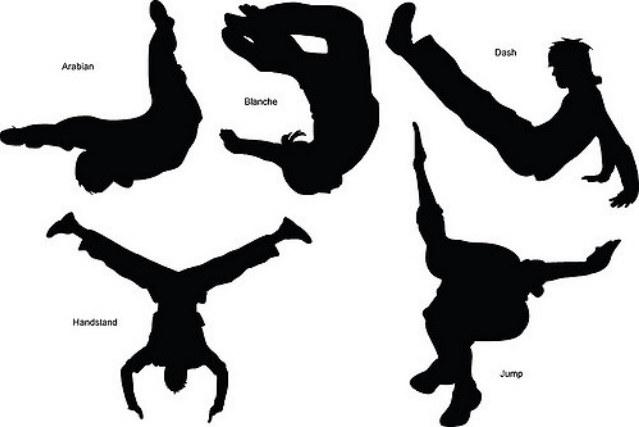 Leora Fridman’s “On Parkour” is an essay about the eponymous street sport, a sport whose extremity depends upon the body’s re-imagining both its own possibilities and the possibilities of an urban environment. A proper map of parkour proves difficult to find; a static, spatial map no longer serves. What’s needed is a map of the body in motion, a map where space is reconstituted in real time. Add on to this the practical complexities: most images of parkour—the silhouetted body cycling through a series of movement—are copyrighted and watermarked, a dispiriting if inevitable conclusion to a sport styled on its resistance to rules of law.
Leora Fridman’s “On Parkour” is an essay about the eponymous street sport, a sport whose extremity depends upon the body’s re-imagining both its own possibilities and the possibilities of an urban environment. A proper map of parkour proves difficult to find; a static, spatial map no longer serves. What’s needed is a map of the body in motion, a map where space is reconstituted in real time. Add on to this the practical complexities: most images of parkour—the silhouetted body cycling through a series of movement—are copyrighted and watermarked, a dispiriting if inevitable conclusion to a sport styled on its resistance to rules of law.
∞
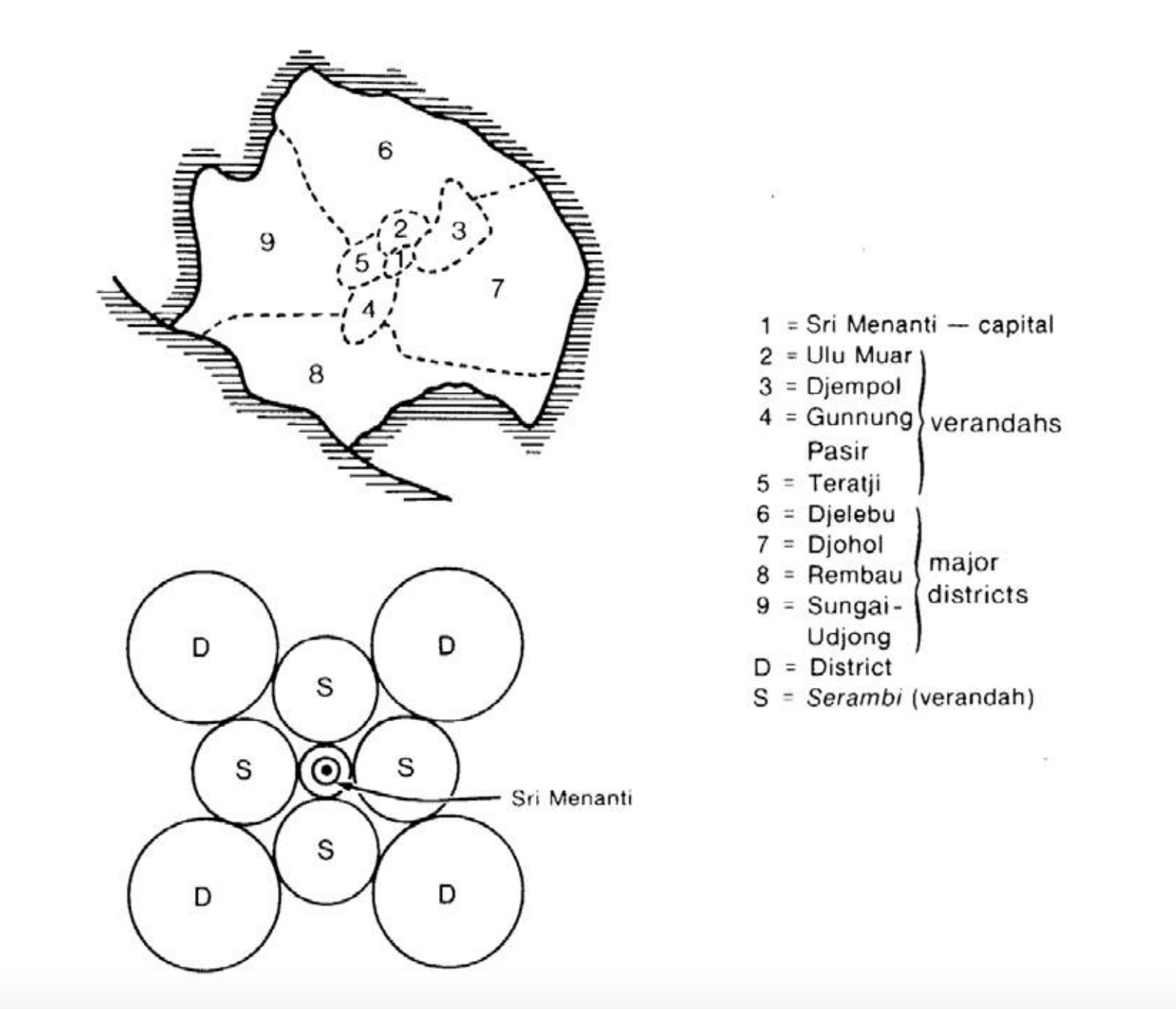 New Juche’s excerpt from The Long Corpse is a meditation on waste and the shifting, sometimes overwhelming sensations that attend decomposition. Especially odor, with its radiating directionality and tendency to permeate and linger, these qualities made all the more pronounced in the humidity and heat of the Southeast Asian uplands that this excerpt explores. The radial is inextricable from if not endemic to Southeast Asian conceptions of space. As scholars of ethnography, cosmology and cartography have all observed, early Southeast Asian territories were not formally divided tracts of land, but comprised sparse concentrations of power whose influence diffused as one traveled away from the center. This system, sometimes called the mandala system or galactic polities, allowed for plural affinities in places where spheres overlapped and more informal, autonomous regions where they didn’t, places like “the wasteland” and The Flowers.
New Juche’s excerpt from The Long Corpse is a meditation on waste and the shifting, sometimes overwhelming sensations that attend decomposition. Especially odor, with its radiating directionality and tendency to permeate and linger, these qualities made all the more pronounced in the humidity and heat of the Southeast Asian uplands that this excerpt explores. The radial is inextricable from if not endemic to Southeast Asian conceptions of space. As scholars of ethnography, cosmology and cartography have all observed, early Southeast Asian territories were not formally divided tracts of land, but comprised sparse concentrations of power whose influence diffused as one traveled away from the center. This system, sometimes called the mandala system or galactic polities, allowed for plural affinities in places where spheres overlapped and more informal, autonomous regions where they didn’t, places like “the wasteland” and The Flowers.
∞
 Eric Lemay’s “Birth Story” moves along a map of the fire exit on the wall of O’Bleness Hospital in Athens, Ohio. A legend accompanies the map: the red man is where you are; anything yellow is a tornado shelter; and the inverted triangle in a red square—an envelope on fire—is an alarm pull station. In case of fire alarm, the map encourages you to think RACE: Remove; Alarm, Activate; Confine and Clear; Extinguish.
Eric Lemay’s “Birth Story” moves along a map of the fire exit on the wall of O’Bleness Hospital in Athens, Ohio. A legend accompanies the map: the red man is where you are; anything yellow is a tornado shelter; and the inverted triangle in a red square—an envelope on fire—is an alarm pull station. In case of fire alarm, the map encourages you to think RACE: Remove; Alarm, Activate; Confine and Clear; Extinguish.
∞
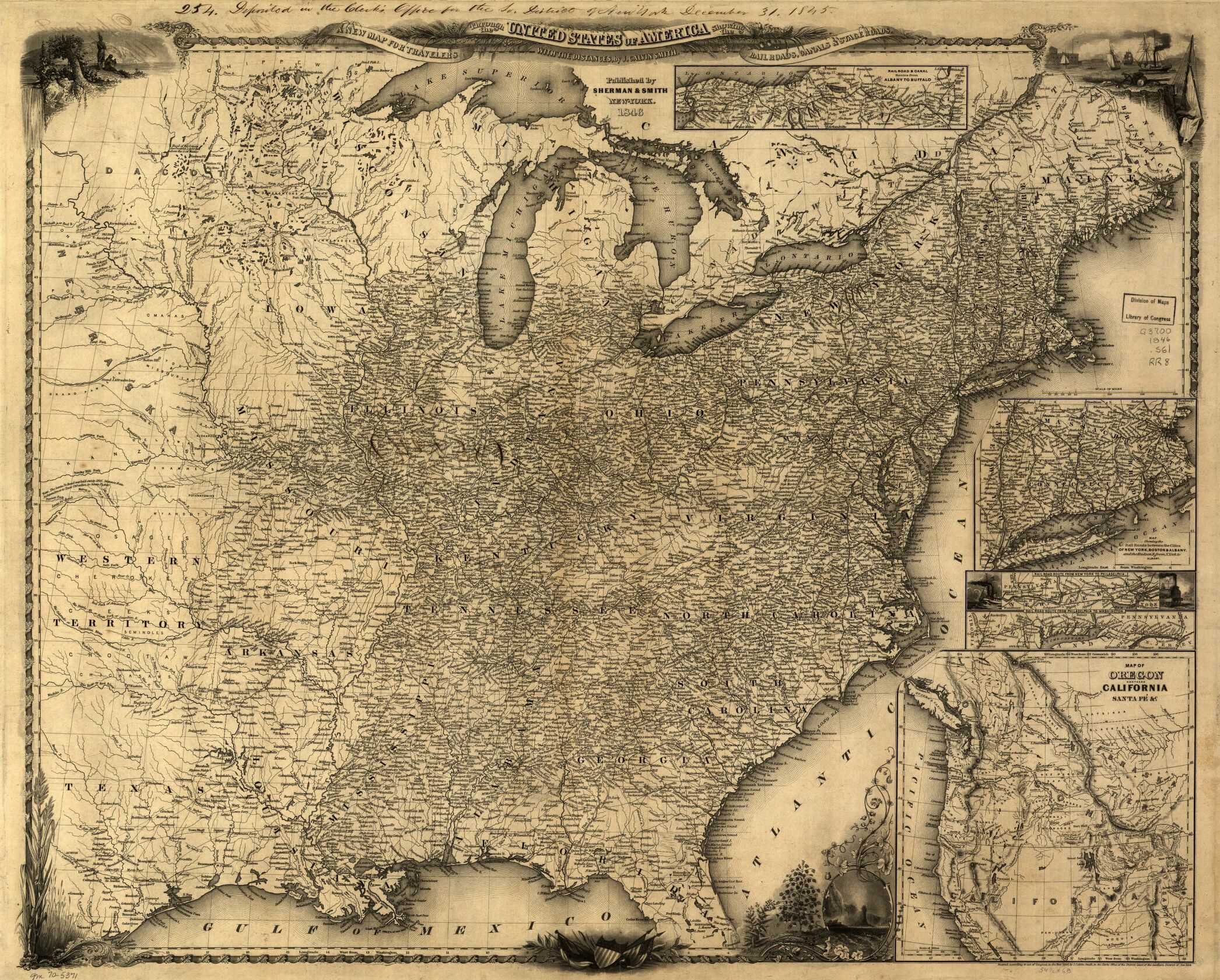 Jory Mickelson’s “Into the Wilderness” is accompanied by an 1846 map, drawn by the cartographer J. Calvin Smith and entitled “A new map for travelers through the United States of America showing the railroads, the canals & stage roads with the distances.” Among other details, Smith’s map indicates various drainage rates and the names of various indigenous tribes, but only west of the Mississippi. “How said the field / the stream strewn, loggered-up / with bodies,” Mickelson writes. For all the foresight the map advertises (distances measured by both road and railroad), the advertisement of its own borders as “decorative” and “framed”—i.e., for ornament only—shows relatively little.
Jory Mickelson’s “Into the Wilderness” is accompanied by an 1846 map, drawn by the cartographer J. Calvin Smith and entitled “A new map for travelers through the United States of America showing the railroads, the canals & stage roads with the distances.” Among other details, Smith’s map indicates various drainage rates and the names of various indigenous tribes, but only west of the Mississippi. “How said the field / the stream strewn, loggered-up / with bodies,” Mickelson writes. For all the foresight the map advertises (distances measured by both road and railroad), the advertisement of its own borders as “decorative” and “framed”—i.e., for ornament only—shows relatively little.
∞
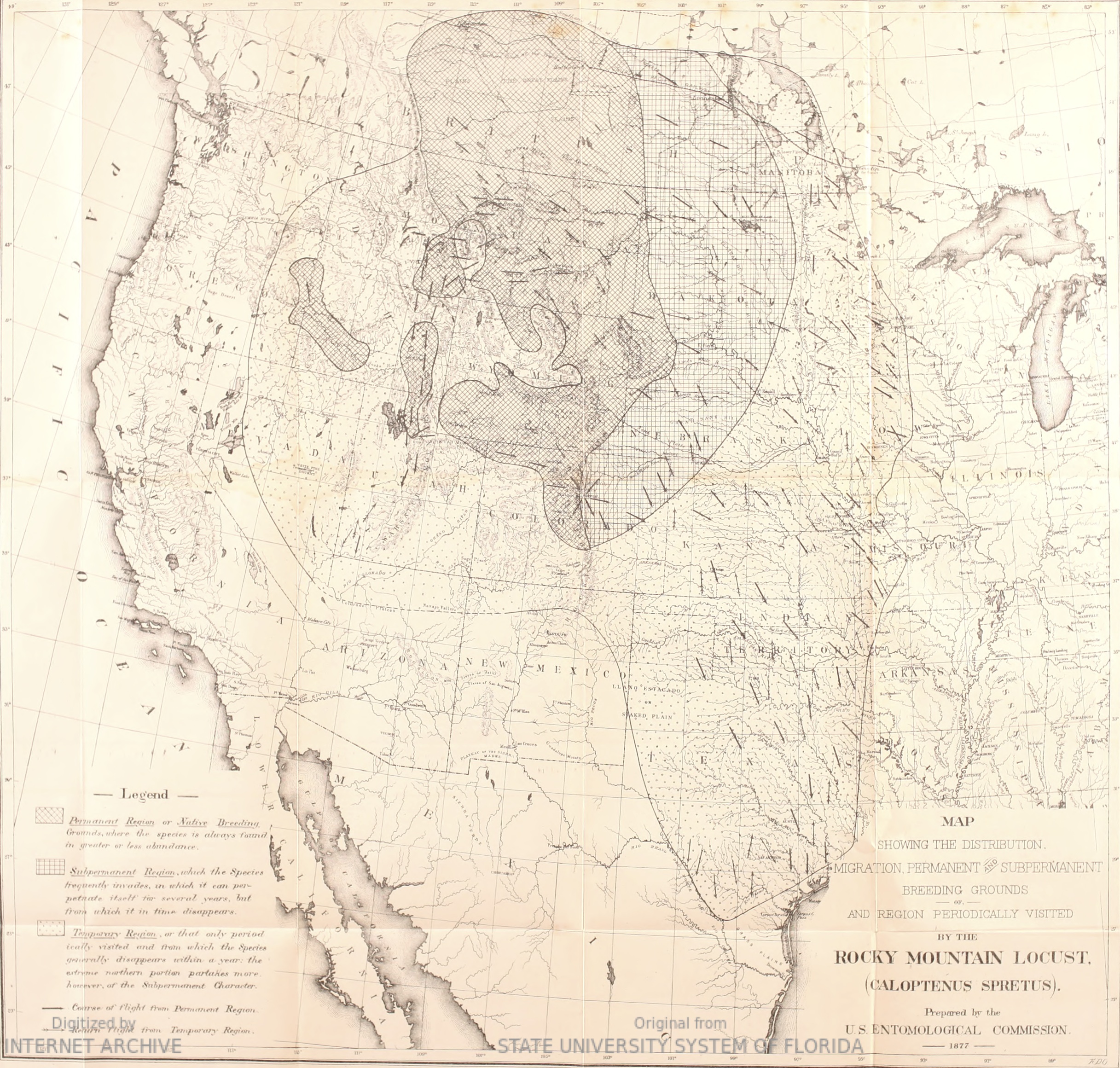 Crystal Willer’s “Shifting Baseline Syndrome” works from an 1877 map prepared by the U.S. Entomological Association, entitled “Map Showing the Distribution, Migration, Permanent and Subpermanent Breeding Grounds and Region Periodically Visited By the Rocky Mountain Locust.” The diagonal crosshatching refers to areas where the locusts are always found. The vertical crosshatching to areas where they are often found. And the dots to areas where they are less often found. The species is now extinct.
Crystal Willer’s “Shifting Baseline Syndrome” works from an 1877 map prepared by the U.S. Entomological Association, entitled “Map Showing the Distribution, Migration, Permanent and Subpermanent Breeding Grounds and Region Periodically Visited By the Rocky Mountain Locust.” The diagonal crosshatching refers to areas where the locusts are always found. The vertical crosshatching to areas where they are often found. And the dots to areas where they are less often found. The species is now extinct.
Contributors
In addition to the standard bio, we ask that our contributors share a location that represents them in some way. Collected together they comprise the genius loci of this issue.
Return to the issue cover page, preview upcoming issues, or learn more about how you can get involved.


